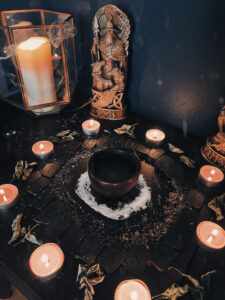
So, you have been called to the path of the Old Norse religion.
Welcome! Should you accept the call to walk this path — the path of Norse Paganism — it will lead you on a journey of deep personal growth, healing, knowledge, and fulfillment.
This path is long and winding, and you will stumble across many forks in the roads and opportunities to be led by your own heart’s desires. Trust this instinct at every twist and turn; it will not lead you astray.
First, Some Important Background on Norse Paganism
Norse paganism, or the Old Norse religion, is the name for the set of religious or spiritual beliefs and practices belonging to the pre-Christian Nordic or North Germanic peoples (primarily in Denmark, Norway, Sweden, and Iceland).
The North Germanic peoples were a distinct branch of the Germanic peoples, who once occupied a much wider region of Northern and Central Europe.
These Ancient Nordic or North Germanic peoples shared common ancestry, culture, and language (the Proto Norse language, spoken between the 2nd and 8th centuries CE, and later the Old Norse language, which emerged at the start of the Viking Age around 800 CE).
Part of their shared culture was the Old Norse religion, which was polytheistic in nature and involved the worship of numerous gods and goddesses.

That said, it’s important to realize that the religion of the Old Norse peoples was not the same as the organized religions we know today.
Beliefs were not written down into a single holy text; instead, mythologies were transmitted orally, and individuals, families, and communities developed beliefs and practices that best served their needs.
For instance, a village of fishermen who lived by a steep cliff overlooking the sea would have different needs — and might therefore venerate different deities and other spirits — than a village of farmers who lived in a valley.
For this reason, it may be helpful to think of Norse paganism as a system of related beliefs and customs that varied based on the geography and needs of the local people, rather than a single religious doctrine.
By the end of the Viking Age in the 11th century, the Old Norse religion was replaced by Christianity. That said, some knowledge of the old ways was preserved in the mythologies that were written down by scholars, as well as the folklore passed down by the people of Scandinavia.
Belief in the Old Norse religion has experienced a revival in modern times, first during the romanticist movement of the nineteenth century, then again during the 1960s and 1970s, which has continued into the present day.
Norse paganism is known today by a number of different terms, including Asatru and Heathenry, among others.
What Do Norse Pagans Believe?
First and foremost, Norse pagans believe in many gods, goddesses, and other spirits (which are often just as important as deities).
The Norse gods and goddesses are divided into two groups or tribes: the Aesir and the Vanir.
Aesir deities include the wise, wandering, one-eyed Odin, who travels through the realms seeking knowledge and warriors to change the fated events of Ragnarök; his hammer-wielding son Thor, protector Midgard; and Tyr, who presides over matters of war, law, justice, and honor (among many others).
Vanir deities include the beloved Freyr, who bestows prosperity, fertility, fair weather, and bountiful harvests; and his sister Freyja, who rules over the realm of Fólkvangr and who taught seiðr (a type of Old Norse magic) to Odin and the Aesir (again, among others).

The Old Norse mythologies also include jötnar or giants (such as Hel, Skadi, and the wolf Fenrir), as well as elves, dwarves, land spirits, and the Norns.
Lastly, ancestor veneration is an important part of modern Norse paganism, just as it was for the earliest practitioners.
All of these various deities and spirits reside in different realms, which exist along the axis of the world tree Yggdrasil. These realms include Midgard (the home of humankind), Asgard (the home the Aesir), and Vanaheim (the home of the Vanir), among others.
Sacrifice (blót) was historically the foundation of Old Norse religion, and still is today.
Certain blóts are held annually, such as those marking the changing of the seasons. Others may be held before or during important personal or community events throughout the year.
How To Begin Practicing Norse Paganism
If you wish to take the first steps of becoming a Norse pagan…
Congratulations, you already have!
Norse paganism is a decentralized, non-dogmatic religion. That means there is no central authority figure in charge, and no official steps you must take (such as a baptism) to begin identifying as a Norse pagan.
While there are various Norse pagan groups and organizations that accept members and hold community rituals, many Norse pagans practice independently.
Norse paganism is also a living religion, meaning it changes and evolves with time. So, the way you practice Norse paganism does not have to be limited to what we know about historical Old Norse religious practices (though it can be if you wish; that is known as Reconstructionism and is a valid path forward).
All of this also means that you won’t find any clear-cut, step-by-step instructions for becoming a Norse pagan.
That said, I can offer some suggestions for how to proceed based on my own personal experiences:
1. Keep reading and learning.
Following a decentralized religion such as Norse paganism offers a wonderful amount of freedom and flexibility; the flip side is that it requires a significant amount of independent study and learning.
Two books that I highly recommend for new (or even not-so-new) practitioners are Myths and Symbols in Pagan Europe by H.R. Ellis Davidson and Ásatrú for Beginnersby Mathias Nordvig.
The former offers a look into what we know about historical pagan practices in Scandinavia and other parts of Northern Europe, and the latter is a guide for modern practitioners interested in practicing Norse paganism.
Jackson Crawford’s YouTube channel and the Nordic Mythology Podcast are two free resources that offer a wealth of knowledge.
Do a Google search for the topics that interest you, such as certain deities, mythologies, and core concepts like wyrd, oorlog, and frith.
2. Build an altar.
An altar is simply a sacred space where you make offerings and perform rituals. There are no hard and fast rules about what needs to be on your altar, and it isn’t something you have to leave on display all the time.
This is your sacred space — make it your own.
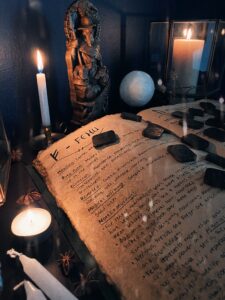
3. Begin the gifting cycle with a deity.
What is the gifting cycle? This is a core Norse pagan practice that is based upon the value of right relationship and reciprocity.
The gods are not vending machines for us to take, take, take from. This is why we perform blóts (i.e. give offerings); it establishes the gifting cycle, or a cycle of reciprocity in which we give to the gods and they give to us.
Which deity should you give an offering to? If you feel that a certain deity has been calling to you (through dreams, signs, or strong feelings) that is a wonderful place to start.
Otherwise, it is perfectly fine to give an offering to a deity who intrigues or interests you; perhaps one who embodies the qualities you value or would like to develop.
Offerings can include foods, beverages, flowers, crafts, or devotional acts. Don’t make the mistake of thinking offerings need to be expensive; I regularly give offerings of fresh water.
4. Celebrate pagan holidays and seasonal festivals.
Once again, being a decentralized religion has both its perks and its frustrations: technically, there are no “official” Norse pagan holidays.
According to Ynglinga Saga, the ancient Norse peoples celebrated three main festivals: one at the start of winter (Winter Nights or Vetrnætr; sometime in October), one at midwinter (Yule; originally sometime in January, but later in December), and one at the start of summer (Sigrblot; sometime in April).
Surprised? While many Reconstructionists do celebrate these three Old Norse holidays, many other Norse pagans celebrate the eight holidays found on the Wheel of the Year (which, although based on historic festivals celebrated throughout Europe, is a modern creation).
There is no wrong or right way to go about celebrating these holidays; whatever calendar system you choose to follow, observing seasonal festivals can be a powerful way of connecting with the rhythms of nature as well as your spiritual practice.
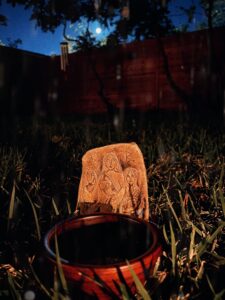
5. Start exploring other practices.
If you wish to become a Norse pagan, simply venerating Old Norse gods and goddesses is enough.
But there are many related practices that branch off from this path, leading you on various other journeys in spirituality and magic. For instance, you may wish to begin studying the Elder Futhark runes or practicing a form of Norse magic such as seiðr (focused on trancework and prophecy) or galdr (singing or chanting incantations).
Ultimately, practicing Norse paganism should bring fulfillment into your daily life. Whether you are seeking wisdom, connection, comfort, inspiration, meaning, or something else entirely, your understand and practice of Norse paganism can be tailored to fit your needs — after all, that is the way it has always been.
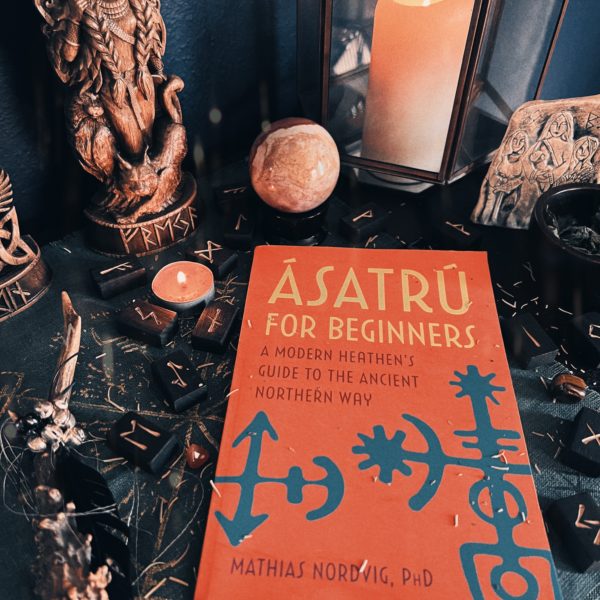
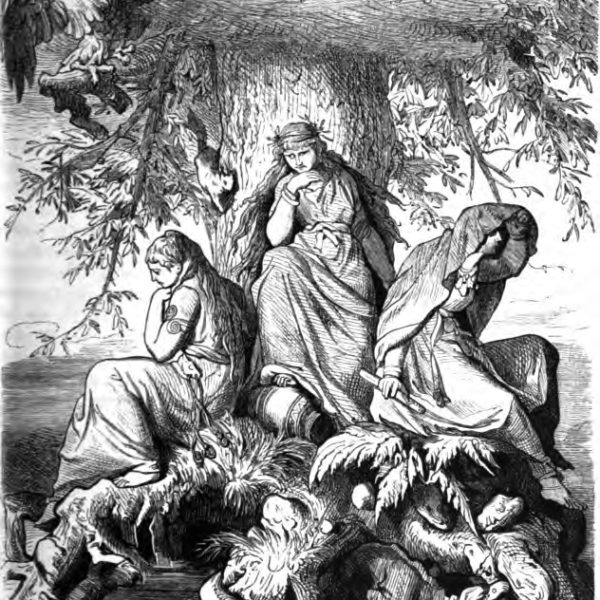
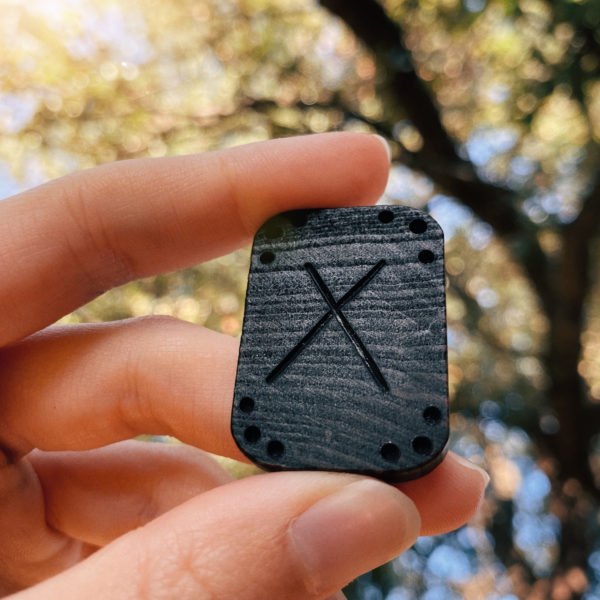













Thank you very much for this information! Im still getting started and still need to get books to read up on.